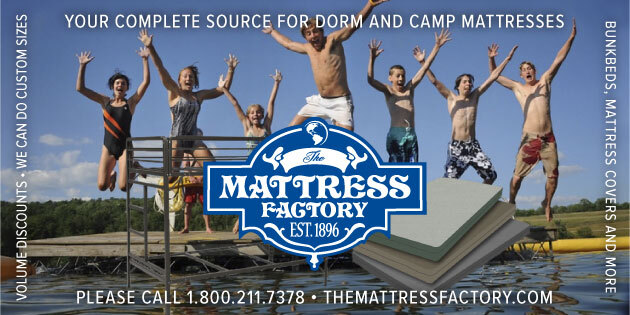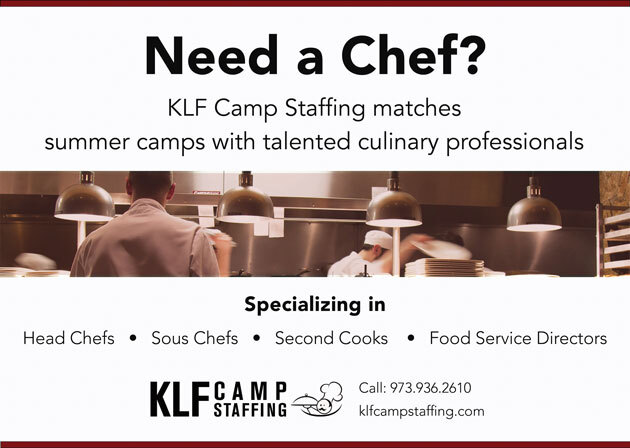Children’s Association for Maximum Potential’s (CAMP) mission is to strengthen and inspire individuals with special needs — and those who care for them — through recreation, respite, and education. That mission is both very specific and, at the same time, quite broad. Its breadth lies in the fact that the “individuals with special needs” we serve span a wide array of abilities and challenges. Campers may face one or a combination of the following:
- Developmental disability
- Physical disability
- Medical condition
- Cognitive disability
- Behavioral challenges
In our traditional programs, we meet our campers where they are by providing them with a 1:1 counselor buddy who can offer the individualized care and support they need. (Sometimes we even have two counselor buddies if the needs of the camper require that.)
When shifting our focus to virtual programs, we faced new challenges. Because social distancing did not allow us to send counselor buddies to be present with our campers in their homes, we had to think carefully about who we could serve, how we could serve them, and what family/caregiver supports would be necessary for less-independent campers to participate. Our first step was to determine a structure for our virtual camp week, what a schedule would look like, what supplies would be needed, and what our costs would be. Our second step was to create a self-assessment tool our camper families could use to determine how well virtual programs would fit their camper and family.
Structure
When planning our week of virtual camp, here are some facets we considered:
Traditions
Traditions and routines are often a central part of any camp experience. For many individuals with special needs, they become crucial. During traditional summers, we kick off our first night of camp with an Opening CAMPfire. We start each day with Morning Flagpole and hold an all-camp dance on the last night. Summer camp typically starts on Sunday afternoons and wraps up midday on Fridays with Closing Ceremonies. We wanted to mirror all of that in our virtual schedule because we believed these components would be important touchstones for our week of virtual summer camp, connecting our campers to these familiar experiences.
Understanding Our Campers
We recognized that the steady go-go-go pace of in-person summer camp does not translate well to the virtual world. Campers (and activity leaders) need to take multiple breaks to allow them to rest their eyes, get snacks, use the restroom, move around a bit, etc. Although traditional programming for us includes five activity rotations during the day and one evening activity after dinner, for our virtual program we decided to scale back to four daytime activity rotations plus an evening activity, allowing extra time for breaks throughout the day.
Variety
We understand that not all campers enjoy all activities equally and wanted to make sure we offered a variety of activities that connect with as many different interest areas as possible. Overall, we structured our daily activities such that the first activity each morning after Morning Flagpole was some sort of hands-on activity, typically in the realm of arts and crafts. For our second activity each day, we chose to focus on science and/or nature activities, often with hands-on components as well. After a lunch break, our third activity each day was an afternoon energizer and/or sports activity, encouraging everyone to get up and move around during that afternoon lull. Our fourth activity focused on cooking, music, and/or drama. Evening activities included Opening CAMPfire, a survival skills session (complete with fort building), a scavenger hunt, a Character Bingo game, and then, of course, the dance.
Supplies
At Camp CAMP we love our acronyms, so when we decided to send out supply boxes that campers could use to engage in activities at home along with our virtual leaders, we created CAMP KITS (Keep-In-Touch Supplies). We shipped KITS or provided touchless local delivery when possible. That included shipping KITS from Texas to California, Massachusetts, Montana, and even Mexico City!
Platform
We investigated a number of online platforms and ultimately decided that Zoom offered us the best features at the best price. We used password protection for entering the sessions and had participants first join to a “waiting room.” We monitored all of that closely and felt our sessions would be sufficiently secure to protect our campers’ privacy. We also gathered resources from ACA and others to prepare and distribute online safety guidelines for our camper families to consider. Zoom additionally allowed us to use breakout rooms for some of our activities (e.g., the virtual scavenger hunt and virtual Character Bingo).
Implementation and Lessons Learned
We quickly learned that in the virtual world we needed to slow down even more than usual. Based on the populations we serve, we are used to allowing extra time to accomplish various steps in activities, but in the virtual world that becomes amplified. It is more difficult for participants to see what is going on virtually compared with in-person, and if they must leave their screens to gather additional supplies, they may miss certain steps altogether. We learned it was best to present very slowly, with a lot of explanation and repetition. We also found that having a primary presenter leading a hands-on activity and a secondary presenter/participant following along, but at a much slower pace, was quite beneficial for campers who might be lagging behind. Not only did it help them feel like it was OK to be behind the primary presenter, but they could possibly follow the steps along with the secondary presenter more closely.
We ascertained that being able to switch camera angles/views was often helpful. By adding a camera that could give more of an overhead view of hands-on activities, rather than only the table-level view from a traditional laptop camera, we were able to better demonstrate some of the activities. An external webcam, or cell phone connected to a laptop as an external webcam, worked very well.
We discovered that due to unreliable internet connections at Camp CAMP, having another staff member logged in as co-host was ideal. There were times our internet connection at camp dropped altogether for up to a few minutes, and the staff member who was online remotely could engage campers in chatting, showing their projects to one another, etc., until staff at camp could rejoin. Having that remote staff to provide additional technical support to camper families having difficulty logging in, to watch the chat for questions, and to act as a second staff member in any breakout rooms was quite beneficial. (Because even in virtual sessions that were being recorded, we felt it was important for at least two staff members to be present in any “room” with campers at any given time.)
We learned that not all activities appealed to all campers, and that was OK. We had some campers who chose to skip all the arts and crafts sessions. Others skipped all the movement/sports sessions. Some had to skip one day of sessions because of other appointments but made all the other sessions. We realized that allowing campers the flexibility to drop in or out of activities based on their interests or out of convenience made sense. We also discovered that recording the sessions and making them available to campers and families who couldn’t attend the live version was beneficial to many of them. Given the special populations we serve, there are times when some of our campers simply “have a bad day,” so they really appreciated being able to come back to an activity later, even if facilitated via a recording rather than live.
There are so many more things I could say about our experience, but there is only so much room here. I think the final takeaways are that with thoughtful planning, offering a variety of activities that tap into a wide range of interests and abilities — and being flexible to learn as you go to make continual improvements — it is possible to offer quality programs to individuals with a variety of needs and abilities. The overwhelming majority of campers and families indicated that the virtual camp opportunities we offered were better than what they expected when they signed up, and the rest indicated these opportunities met their expectations.
One final note: Many of the campers who participated were new to CAMP, and their families had been reluctant to “send their camper off to CAMP alone” in the past. After seeing how well the virtual camp sessions went, they all indicated they will be ready to let their campers try traditional camp when the pandemic allows. Even beyond the pandemic, we are starting to contemplate the potential value of utilizing virtual programming to complement our in-person programs as a means of reaching campers and families who may have previously been out of reach.
Brandon G. Briery, PhD, is the executive camp director and chief program officer for Camp CAMP (Children’s Association for Maximum Potential). He is also a licensed psychologist specializing in clinical child and pediatric psychology and has been actively involved in camps for individuals with special needs through staff, volunteer, and research roles since 1992.
Photo courtesy of Camp John Marc, Dallas, Texas.



